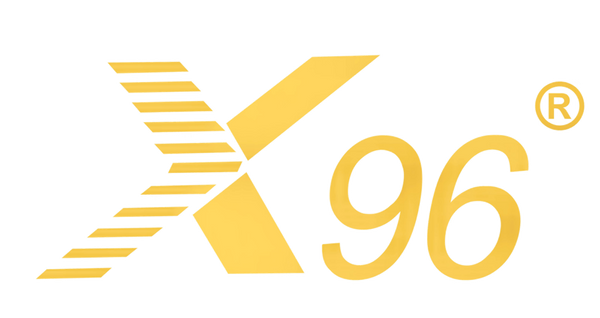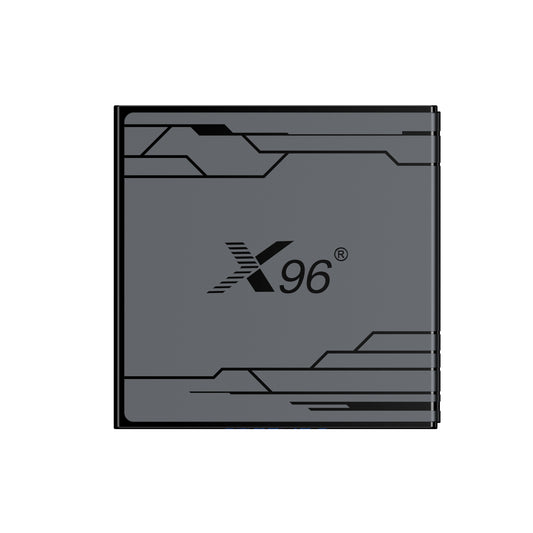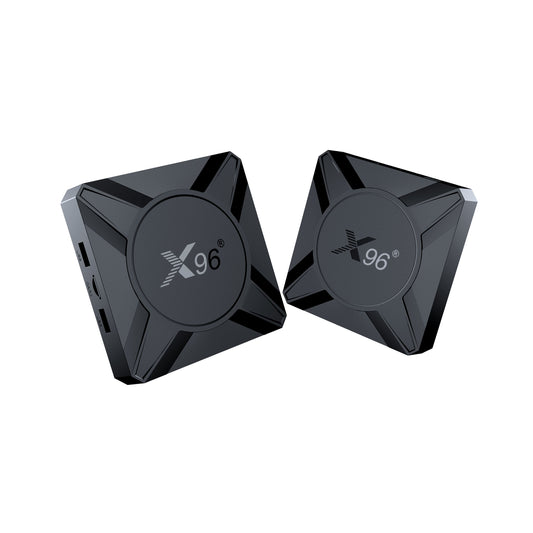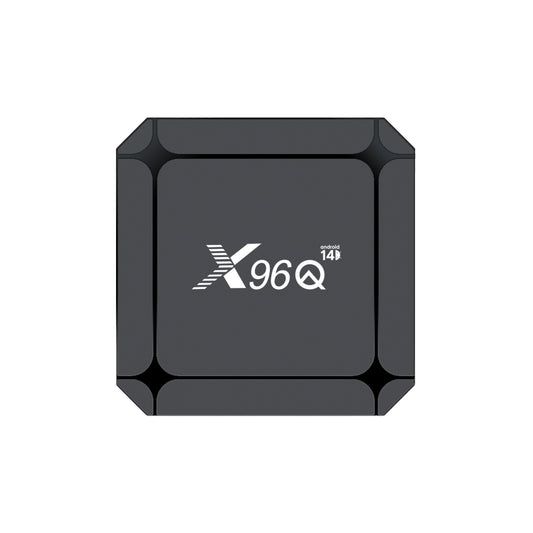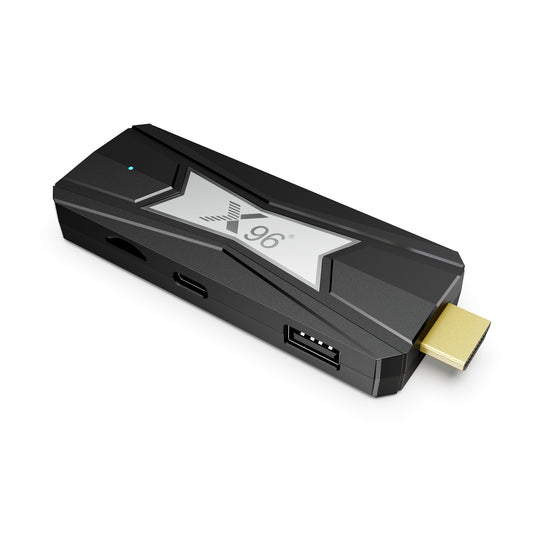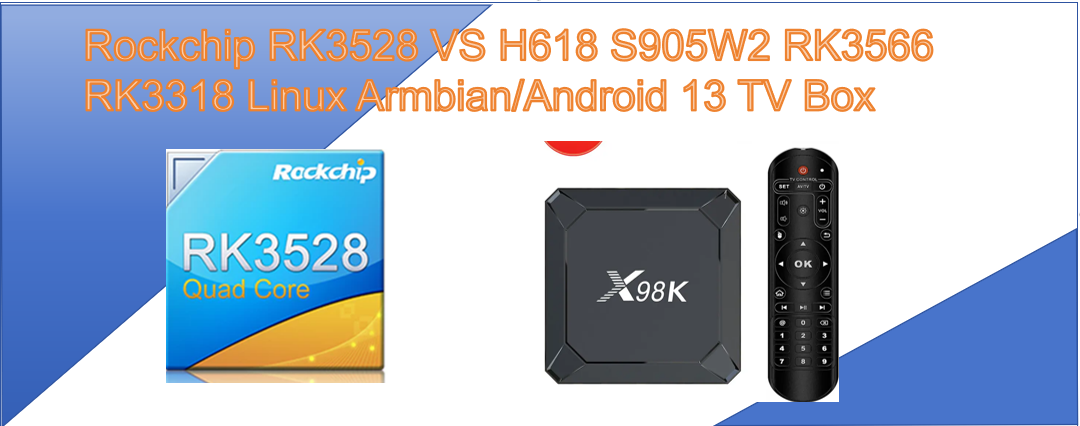
Rockchip RK3528 VS H618 S905W2 RK3566 RK3318 Linux Armbian/Android 13 TV Box
1.Rockchip RK3528

The Rockchip RK3528 is a highly versatile and powerful system-on-chip (SoC) that has gained prominence in the realm of smart TVs, set-top boxes, and various multimedia devices. Designed to deliver exceptional performance while maintaining energy efficiency, the RK3528 supports smooth 4K video playback and is compatible with a wide range of streaming applications, making it an ideal choice for media consumption.
One of the standout features of the RK3528 is its ability to run seamlessly on both Android and Linux operating systems, providing users with flexibility and a rich user experience. This adaptability allows developers to create a variety of applications tailored to different environments, enhancing the overall functionality of devices powered by this chipset.
Furthermore, the Rockchip RK3528 Quad Core is equipped with multiple connectivity options, enabling users to easily connect to various peripherals and networks. This connectivity, combined with its robust processing capabilities, makes the RK3528 a preferred option for those looking to build or upgrade their home entertainment systems.
In summary, the Rockchip RK3528 stands out as a reliable and efficient SoC that caters to the growing demands of modern multimedia applications, providing users with an immersive experience in streaming, gaming, and beyond. Its combination of performance, flexibility, and connectivity solidifies its position as a compelling choice in the competitive landscape of multimedia technology.
2. RK3528 Specs
This RK3528 Specs table provides a comprehensive overview of the Rockchip RK3528's specifications, showcasing its capabilities and features relevant to potential users and developers.
| CPU | Chipset | RK3528A | ||
| Architecture | Quad Core ARM Cortex A53 | |||
| GPU | Chipset | ARM Mali-450 GPU | ||
| Architecture | OpenGL ES 1.1/2.0 and OpenVG 1.1 support | |||
| RAM | Capacity | 2GB (4GB Optional) | ||
| ROM | Capacity | 16GB (32/64/128GB Optional) | ||
| External storage | USB Storage Devices | Supported | ||
| Micro SD card | Supported | |||
| Software | ||||
| Operating system | OS Version | Android 13 | ||
| Language | Multi-Language | |||
| Multimedia | Video | * Video Decoder | ||
| H.264/AVC BP/MP/HP profile @ level 5.1; H.264/AVC MVC; up to 4Kx2K @ 60fps | ||||
| H.265/HEVC Main/Main10 profile @ level 5.1 High-tier; up to 4Kx2K @ 60fps | ||||
| AVS2 4KX2K @60fps | ||||
| MPEG-1, Main profile, up to 1080P @ 60fps | ||||
| MPEG-2, SP@ML, MP@HL, up to 1080P @ 60fps | ||||
| MPEG-4, ASP profile @ level 5, up to 1080P @ 60fps | ||||
| AVS, Jizhun profile @ level 6.0; up to 1080P @ 60fps | ||||
| AVS-P16 (AVS+), up to 1080P @ 60fps | ||||
| H.263, up to 576P @ 60fps | ||||
| VC-1, SP@ML, MP@HL, AP@L0-3, up to 1080P @ 60fps | ||||
| * Video Encoder | ||||
| Support video encoder for H.264, HP@level4.2 | ||||
| H.264 maximum frame rate is up to 1920x1080 @60fps | ||||
| Capable of encoding HEVC Main Profile @ L4.1 High-tier | ||||
| H.265 resolution and frame rate are up to 1920x1080 @60fps | ||||
| JPEG encoder included | ||||
| Audio | Serial Audio Interface | |||
| SPDIF | ||||
| Audio CODEC | ||||
| Image | HD JPEG、BMP、GIF、PNG、TIF | |||
| Network service | ||||
| Wi-Fi | Type | Support WiFi IEEE 802.11 b / g / n / ac / ax | ||
| Frequency | Support 2.4GHz/5GHz WiFi 6 | |||
| Antenna Type | Single antennas | |||
| Bluetooth | Bluetooth | Support BT5.X | ||
| Interface | ||||
| Charge | DC connector | DC IN(5V/2A) | ||
| Video output | HDMI | 4K*2K UHD Output, HDMI 1.4/2.X | ||
| IR Reciver | On board | Remote Reciver Connect | ||
| Micro SD | External memory | Support | ||
| USB port | USB host | USB3.0 *1 USB2.0 *2 |
||
| Ethernet | Ethernet | 100M Ethernet(1000M Optional) | ||
| Appearance | ||||
| Body Material | Plastic | |||
| Color | Black | |||
| Size | 105*105*18.5mm | |||
| Weight | / | |||
| Cerifications(For Unit) | ||||
| Standard | / | |||
| / | ||||
| Others | Optional | |||
| Package contents | Shipping Info | |||
| User manual | *1 | Gift Box Dimension(mm) | 205*140*50mm | |
| Gift Box | *1 | Carton Size(mm) | 420*270*305 (mm) | |
| Remote control | *1 | Qty Per Carton(pcs) | 20 | |
| HDMI external cable | *1 | Gift Box.G.W(gs) | 0.4Kg | |
| Power adapter | *1 | Export carton (G.W.)(kgs) | 8.5Kg | |

3.RK3528 Linux Armbian
The Rockchip RK3528 is a powerful system-on-chip (SoC) that performs exceptionally well in various applications, especially when combined with Linux distributions such as Armbian. Armbian is a lightweight, community-driven operating system tailored specifically for ARM development boards, delivering a stable and efficient environment for users. This article provides an in-depth examination of how the RK3528 Linux experience is enhanced when using RK3528 Armbian.
1. RK3528 Linux Armbian Performance and Compatibility
The RK3528’s quad-core ARM Cortex-A53 architecture, coupled with the Mali-450 MP2 GPU, ensures that it delivers impressive performance for tasks ranging from media playback to light gaming. With RK3528 Armbian, users can expect optimized performance, as the operating system is tailored to leverage the capabilities of the RK3528 effectively. This includes:
- Smooth Multitasking: The Rockchip 3528 4-core CPU allows for efficient multitasking, making it suitable for running multiple applications simultaneously without significant lag.
- Graphics Performance: The Mali-450 GPU supports OpenGL ES 3.2, enabling smooth graphics rendering for applications and games.
RK3528 Linux Installation and User Experience
Installing Armbian on devices powered by the RK3528 is straightforward. The community provides pre-built images that are easy to flash onto eMMC or microSD cards. Once installed, users can enjoy a user-friendly experience, with a desktop environment that is responsive and customizable.
- Desktop Environments: Armbian offers various desktop environments, including XFCE and MATE, which are lightweight and suitable for the RK3528’s hardware.
- Software Repositories: Users can access a vast repository of software packages, allowing for easy installation of applications via terminal or graphical package managers.
RK3528 Armbian Connectivity and Multimedia Support
The RK3528's connectivity options, such as HDMI 2.0, USB 3.0, and Ethernet, work seamlessly with Armbian, making it a versatile choice for multimedia applications.
- 4K Video Playback: With support for 4K video decoding, users can enjoy high-definition media content without issues. Armbian’s optimizations ensure that video playback is smooth and stable.
- Streaming Capabilities: Users can install popular streaming applications, allowing for a rich media experience directly from their devices.
RK3528 Armbian Community Support and Development
One of the significant advantages of using Armbian with the RK3528 is the active community that supports both the operating system and the hardware. Users can find extensive documentation, forums, and resources to troubleshoot issues, share experiences, and contribute to the development of new features.
- Frequent Updates: Armbian is regularly updated, providing users with the latest kernel improvements, security patches, and new features.
- Community Contributions: Users can participate in the community, contributing to bug fixes, feature requests, and documentation improvements.
Conclusion
Rockchip RK3528 Linux Armbian creates a powerful platform for users looking to harness the capabilities of ARM architecture. Whether for media playback, light gaming, or development projects, this pairing offers a stable and efficient environment that is easy to set up and use. With the support of a vibrant community and a wealth of available software, the RK3528 with Armbian is an excellent choice for both hobbyists and professionals alike.
4.RK3528 Android 13
The Rockchip RK3528 is a highly versatile system-on-chip (SoC) that has gained significant traction in the Android ecosystem, especially with its compatibility with RK3528 Android 13. This latest iteration of Android introduces a wide array of features and optimizations that significantly enhance the user experience. As a result, the RK3528 Android 13 combination makes it an appealing choice for smart devices, TV boxes, and various multimedia applications.
Key Features of RK3528 android 13
1.Enhanced User Interface:- Android 13 introduces a refined user interface with improved Material You design elements. This allows for a more personalized experience, as users can customize themes and colors based on their preferences.
- The RK3528’s GPU capabilities ensure smooth animations and transitions, enhancing the overall visual experience.
- RK3528 Android 13 benefits from optimizations that improve system performance and responsiveness. The quad-core ARM Cortex-A53 architecture ensures that tasks are executed efficiently, whether it’s streaming media or running applications.
- Background processes are managed more effectively, allowing for smoother multitasking.
- Android 13 supports advanced multimedia features, including HDR video playback and improved audio processing. The RK3528’s capabilities in 4K video decoding make it an excellent choice for high-definition content.
- Users can enjoy immersive audio experiences with support for spatial audio and enhanced codec support.
- Android 13 emphasizes user privacy, introducing new permissions and settings that give users more control over their data. The RK3528’s hardware features work in tandem with these updates to provide a secure environment.
- Regular security updates ensure that devices powered by the RK3528 remain protected against vulnerabilities.
- The RK3528 supports various connectivity options, including Wi-Fi 5, Bluetooth 5.0, and Ethernet, which are seamlessly integrated into Android 13. This allows for fast and reliable connections to networks and peripherals.
- The improved connectivity options facilitate better streaming experiences and quicker data transfers.
6. App Compatibility:
- Android 13 maintains compatibility with a wide range of applications available on the Google Play Store. The RK3528’s processing power ensures that even resource-intensive apps run smoothly.
- Users can easily install popular streaming services, games, and productivity applications, enhancing the versatility of devices powered by the RK3528.
7.Developer Features:
- For developers, Android 13 offers enhanced tools and APIs that leverage the capabilities of the RK3528. This includes support for machine learning, improved graphics rendering, and better integration with hardware features.
- The RK3528’s architecture allows developers to create optimized applications that take full advantage of the SoC’s performance.
With an enhanced user interface, performance optimizations, and robust multimedia capabilities, this combination delivers an exceptional user experience. As Android evolves, RK3528 Android 13 remains a competitive choice for maximizing the potential of modern applications, making it an attractive solution for both users and developers.
5.rk3528 vs h618 rk3528 vs s905w2 rk3528 vs rk3566 rk3318 vs rk3528
Comparative specification table for the Rockchip RK3528, H618, S905W2, RK3566, and RK3318 SoCs:
| Specification | RK3528 | H618 | S905W2 | RK3566 | RK3318 |
| CPU Architecture | Quad-core Cortex-A53 | Quad-core Cortex-A53 | Quad-core ARM Cortex-A35 | Quad-core Cortex-A55 | Quad-core Cortex-A53 |
| GPU | Mali-450 MP2 | Mali-G31 MP2 | Mali-G31 MP2 | Mali-G52 MP2 | Mali-450 MP |
| Process Technology | 12nm | 12nm | 12nm | 22nm | 12nm |
| Max Resolution | 4K @ 60fps | 4K @ 60fps | 4K @ 60fps | 4K @ 60fps | 4K @ 60fps |
| RAM Support | Up to 4GB DDR3/DDR4 | Up to 8GB DDR4 | Up to 4GB DDR4 | Up to 8GB DDR4 | Up to 4GB DDR4 |
| Storage Interface | eMMC 5.1, SD Card | eMMC 5.1, SD Card | eMMC 5.1, SD Card | eMMC 5.1, SD Card | eMMC 5.1, SD Card |
| Video Decoding | VP9, H.265, H.264 | VP9, H.265, H.264 | VP9, H.265, H.264 | VP9, H.265, H.264 | VP9, H.265, H.264 |
| Audio Decoding | PCM, DSD | PCM, DSD | PCM, DSD | PCM, DSD | PCM, DSD |
| Connectivity | Wi-Fi 5, Bluetooth 5.0 | Wi-Fi 6, Bluetooth 5.0 | Wi-Fi 5, Bluetooth 5.0 | Wi-Fi 5, Bluetooth 5.0 | Wi-Fi 5, Bluetooth 5.0 |
| USB Ports | USB 3.0, USB 2.0 | USB 3.0, USB 2.0 | USB 3.0, USB 2.0 | USB 3.0, USB 2.0 | USB 3.0, USB 2.0 |
| Release Year | 2020 | 2021 | 2021 | 2021 | 2019 |
(A) rk3528 vs h618
RK3528 vs H618: Differences and Advantages/Disadvantages
1. CPU Architecture
- Advantages: Low power consumption, suitable for basic applications.
- Disadvantages: Relatively weak performance, not ideal for high-load tasks.
- Advantages: Higher performance and better efficiency, suitable for multitasking.
- Disadvantages: More complex, may not be as optimized for low-power scenarios.
2. GPU Performance
RK3528: Mali-450 MP2
- Advantages: Supports basic graphics processing, suitable for general multimedia tasks.
- Disadvantages: Average performance under heavy graphical loads.
H618: Mali-G31 MP2
- Advantages: Better overall performance due to CPU advantages, suitable for gaming and high-resolution video playback.
- Disadvantages: Similar limitations as RK3528 under extreme conditions.
3. Memory Support
RK3528: Up to 4GB DDR3/DDR4
- Advantages: Sufficient for mid-range devices.
- Disadvantages: Limited memory may affect multitasking capabilities.
H618: Up to 8GB DDR4
- Advantages: Suitable for memory-intensive applications, enhances multitasking.
- Disadvantages: Higher cost.
4. Video Decoding Capability
RK3528: Supports 4K @ 60fps
- Advantages: Ideal for home entertainment needs.
- Disadvantages: May struggle in complex scenarios.
H618: Supports 4K @ 60fps
- Advantages: Higher decoding efficiency and better video quality.
- Disadvantages: May be overkill for average users.
5. Connectivity
RK3528: Wi-Fi 5, Bluetooth 5.0
- Advantages: Suitable for most home and office environments.
- Disadvantages: Lacks support for the latest connectivity standards.
H618: Wi-Fi 6, Bluetooth 5.0
- Advantages: Faster data transfer and better device connectivity, suitable for modern applications.
- Disadvantages: Increased cost and complexity.
rk3528 vs h618 Summary
RK3528:
- Advantages: Cost-effective, energy-efficient, ideal for basic applications.
- Disadvantages: Limited performance and memory.
H618:
- Advantages: Powerful, larger memory support, suitable for demanding applications.
- Disadvantages: Higher cost.
(B) rk3528 vs s905w2
RK3528 vs S905W2: Key Differences
- CPU Architecture
- RK3528: Cortex-A53
- Performance: Designed for low-power applications, suitable for basic tasks.
- S905W2: ARM Cortex-A35
- Performance: Offers improved performance and efficiency, better suited for multitasking and demanding applications.
- GPU Performance
- RK3528: Mali-450 MP2
- Graphics: Basic graphics capabilities, adequate for standard multimedia tasks.
- S905W2: Mali-G31 MP2
- Graphics: Similar GPU but benefits from the improved CPU architecture, resulting in better overall performance in graphics-intensive tasks.
- Memory Support
- RK3528: Up to 4GB DDR3/DDR4
- Limitations: Sufficient for basic applications, but may hinder multitasking.
- S905W2: Up to 8GB DDR4
- Advantages: Enhanced memory capacity, suitable for memory-intensive applications and better multitasking performance.
- Video Decoding Capability
- RK3528: Supports 4K @ 60fps
- Video Quality: Good for home entertainment, but may struggle with complex scenarios.
- S905W2: Supports 4K @ 60fps with better efficiency
- Video Quality: Improved decoding efficiency, better handling of high-resolution content.
- Connectivity Options
- RK3528: Wi-Fi 5, Bluetooth 5.0
- Limitations: Adequate for most users but lacks the latest standards.
- S905W2: Wi-Fi 5, Bluetooth 5.0
- Similar Connectivity: While both have Wi-Fi 5, the S905W2 may offer better integration with modern devices.
RK3528 vs S905W2 Summary
- RK3528:
- Strengths: Cost-effective and energy-efficient, suitable for basic applications.
- Weaknesses: Limited performance and memory capacity.
- S905W2:
- Strengths: More powerful, supports larger memory, and better suited for demanding applications.
- Weaknesses: Slightly higher cost.
(C) RK3528 vs RK3566
RK3528 vs RK3566: Performance Comparison
- CPU Architecture
- RK3528: Cortex-A53
- Performance: Designed for low-power applications, suitable for basic tasks. Limited performance in multitasking and demanding applications.
- RK3566: Cortex-A55 (Quad-core)
- Performance: Offers significantly improved performance and efficiency. Better suited for multitasking and more demanding applications.
- GPU Performance
- RK3528: Mali-450 MP2
- Graphics: Adequate for basic multimedia tasks but struggles with high-resolution graphics and gaming.
- RK3566: Mali-G52
- Graphics: Provides better graphics performance, capable of handling more intensive graphical applications and gaming.
- Memory Support
- RK3528: Up to 4GB DDR3/DDR4
- Limitations: Sufficient for basic applications, but may hinder multitasking and performance in memory-intensive tasks.
- RK3566: Up to 8GB DDR4
- Advantages: Enhanced memory capacity allows for better multitasking and performance in resource-heavy applications.
- Video Decoding Capability
- RK3528: Supports 4K @ 60fps
- Video Quality: Good for home entertainment but may struggle with more complex video formats.
- RK3566: Supports 4K @ 60fps with better efficiency
- Video Quality: Improved decoding capabilities, better handling of high-resolution and complex video formats.
- Connectivity Options
- RK3528: Wi-Fi 5, Bluetooth 5.0
- Limitations: Adequate for most users, but lacks support for newer standards.
- RK3566: Wi-Fi 6, Bluetooth 5.0
- Advantages: Supports the latest connectivity standards, offering faster data transfer and better connectivity.
RK3528 vs RK3566 Summary
- RK3528:
- Strengths: Cost-effective and energy-efficient, suitable for basic applications.
- Weaknesses: Limited performance, memory, and graphics capabilities.
- RK3566:
- Strengths: More powerful CPU and GPU, supports larger memory, better suited for demanding applications, and offers advanced connectivity options.
- Weaknesses: Generally higher cost.
(D)rk3318 vs rk3528
RK3318 vs RK3528: Key Features Overview
- Processor Architecture
- RK3318: Utilizes a quad-core Cortex-A53 CPU, designed for efficient handling of basic tasks.
- RK3528: Also features a quad-core Cortex-A53 CPU, but with slight optimizations for better performance in multimedia applications.
- Graphics Processing
- RK3318: Equipped with a Mali-450MP GPU, suitable for standard graphics rendering.
- RK3528: Shares the same Mali-450 MP2 GPU, providing comparable graphics capabilities.
- Memory Support
- RK3318: Supports up to 4GB of DDR3 RAM, sufficient for basic applications.
- RK3528: Also supports up to 4GB, but can work with DDR4, offering improved memory speed and efficiency.
- Video Decoding Capabilities
- Both SoCs: Support 4K video decoding at 60fps, making them suitable for high-definition media playback.
- Connectivity Options
- RK3318: Includes Wi-Fi 5 and Bluetooth 4.2, adequate for common connectivity needs.
- RK3528: Offers Wi-Fi 5 as well, but upgrades to Bluetooth 5.0 for enhanced connectivity range and speed.
- Target Applications
- RK3318: Best suited for budget-friendly devices focusing on basic functionalities.
- RK3528: Aims at slightly more demanding multimedia applications, benefiting from better memory support.
rk3318 vs rk3528 Conclusion
RK3318: Ideal for cost-sensitive projects with minimal performance requirements.
RK3528: A more versatile option for applications needing enhanced multimedia performance and connectivity.
RK3528 VS H618, S905W2, RK3566, RK3318 Summary
The RK3528 is a versatile SoC featuring a quad-core Cortex-A53 CPU and Mali-450 GPU, supporting up to 4GB of DDR4 memory, making it suitable for multimedia applications. In comparison, the H618 offers a more powerful Cortex-A53 CPU and supports up to 8GB of memory, ideal for demanding tasks. The S905W2 also utilizes a Quad-core ARM Cortex-A35, providing enhanced performance and memory support, while the RK3566 boasts a superior architecture and up to 8GB of memory for high-performance environments. Meanwhile, the RK3318, while similar, lacks DDR4 support and is better suited for basic applications. Overall, the RK3528 is cost-effective for entry-level tasks, while the others cater to higher performance needs.
6.RK3528 TV Box
The RK3528 TV Box is a smart television box built on the RK3528 chipset, which has gained widespread recognition in the market for its impressive performance and cost-effectiveness. Featuring a quad-core Cortex-A53 CPU and a Mali-450 MP2 GPU, it supports up to 4GB of DDR4 memory, enabling smooth playback of high-definition videos, running applications, and gaming, thus meeting users' multimedia entertainment needs.
X98K Android 13 Rockchip RK3528 Quad Core TV box

Market Preference
The RK3528 TV Box is particularly popular among budget-conscious consumers. Its relatively low price combined with good performance makes it a favored choice for many households looking to enhance their entertainment experience. Users generally praise its user-friendly interface, which is simple to navigate. Additionally, the RK3528 supports various streaming platforms such as Netflix, YouTube, and Hulu, allowing users easy access to a rich library of content.
Market Feedback
User feedback indicates that the RK3528 TV Box performs well in video playback and application execution, capable of smoothly playing 4K videos and supporting HDR image display, which enhances the viewing experience. Many users appreciate its quick startup times and smooth operation, especially when switching between applications and browsing content.
However, in certain high-performance scenarios, the RK3528 may fall short. Some users have noted that when running more complex applications or games, the performance may not meet their expectations. As a result, the market has seen the emergence of higher-performance alternatives like the H618 and S905W2, which support Quad Core ARM Cortex A35 and higher memory capacities, better catering to the needs of power users.
Summary
The Rockchip RK3528 is a powerful SoC that features a quad-core Cortex-A53 CPU and a Mali-450 MP2 GPU, making it ideal for multimedia applications. In terms of specifications, the RK3528 specs include support for up to 4GB of DDR4 memory, which enhances its capability for streaming and gaming compared to other chips.
When looking at the RK3528 Linux Armbian compatibility, it provides a robust platform for users interested in development and customization, offering flexibility for various applications. Additionally, the RK3528 supports RK3528 Android 13, allowing users access to a wide range of apps and services for a seamless entertainment experience.
In comparisons, the rk3528 vs h618 and rk3528 vs s905w2 highlight that while the RK3528 is cost-effective, the H618 offer performance with Cortex-A53 CPUs and support for up to 8GB of memory. The rk3528 vs rk3566 shows that the RK3566 excels in high-performance scenarios, while the rk3318 vs rk3528 indicates that the RK3318 is more suited for basic tasks due to its lack of DDR4 support.
Overall, the RK3528 Android TV Box is a popular choice among budget-conscious consumers, providing a reliable multimedia experience that meets the needs of most users, while also facing competition from higher-performance alternatives.
